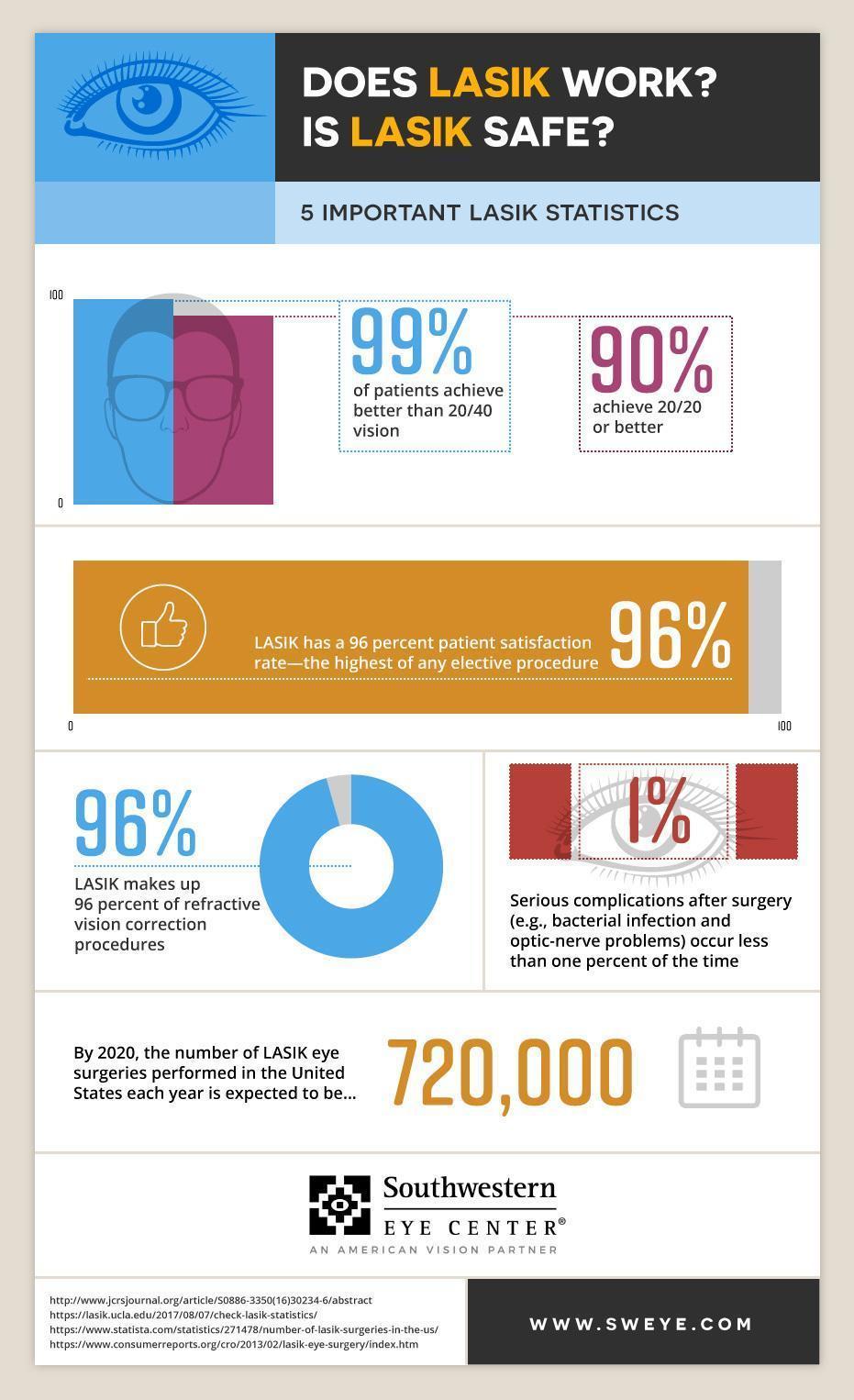Laser eye surgical procedure is a typical option for dealing with refractive errors such as nearsightedness (nearsightedness), farsightedness (hyperopia) and also astigmatism. It can reduce your need for glasses or get in touch with lenses.
Throughout laser eye surgical treatment, your surgeon uses a special cutting laser to reshape the dome-shaped clear tissue at the front of your eye (cornea). This allows light to flex appropriately as well as focus directly onto the retina.
LASIK
LASIK is a laser eye surgical procedure that deals with nearsightedness (myopia) and farsightedness (hyperopia) by altering the shape of the cornea. This improving of the cornea changes the means light hits your retina, making pictures clearer and a lot more noticeable.
During LASIK, your eye doctor will certainly create a thin flap in the surface of your cornea with a mechanical microkeratome or with a laser keratome. The medical professional might additionally use a suction ring to flatten the cornea.
You will be provided drops that numb your eyes so you do not really feel any discomfort during the procedure. Next, the corneal flap is raised and also folded up back on its hinge, which enables a percentage of tissue under it to be removed with a laser.
The excimer laser improves your stroma layer according to your special prescription, getting rid of cells that cause nearsightedness and/or farsightedness. After the improving is complete, your doctor will certainly replace the flap and you'll start to see your vision clearly.
PRK
PRK (photorefractive keratectomy) is a laser eye surgical procedure that corrects refractive errors by improving the cornea. recommended site is the clear front surface of your eyes that helps refract light and focus it on your retina, allowing you to see clearly.
A refractive mistake takes place when the cornea doesn't bend light appropriately, triggering blurred vision up close or far. Common vision issues that can be dealt with by PRK consist of nearsightedness (nearsightedness), hyperopia (farsightedness), and also astigmatism.
To figure out if you are a great candidate for PRK, your eye doctor will certainly review your medical history and perform an extensive examination of your eyes. You also need to be healthy and have a steady lens prescription that hasn't changed in 2 years or even more to certify.
Prior to the procedure, you'll be given numbing drops to stop discomfort during the procedure. You may additionally be provided a light sedative to assist you loosen up. Your eyes will likely come to be fuzzy throughout the very first few weeks after PRK, however your vision gradually enhances gradually.
LASEK
LASEK is a laser eye surgical treatment treatment that's a good alternative for patients with slim corneas or that go to threat of complications in the future. https://writeablog.net/rosendo836chantay/just-how-to-determine-the-expense-of-lens-substitute-surgical-procedure to LASIK, LASEK utilizes an excimer laser to reshape your cornea, however the laser is utilized directly underneath the epithelium.
The vital distinction in between LASIK as well as LASEK is that LASIK involves reducing a flap into the surface area of the cornea before the surgical procedure begins. This is made with a specialized blade or laser, and after that the flap is folded up back to access the corneal tissue for reshaping.
With LASEK, the physician initially provides an option of alcohol to momentarily remove the epithelium from the surface area of the eye. The service will certainly loosen up the epithelium, making it simpler to raise. Next off, the physician removes the epithelium to expose the sub-layer of the cornea for improving with the excimer laser.
LENS EXCHANGE
Refractive lens exchange, likewise known as clear lens removal or CLEAR LENS EXCHANGE, is a refractive eye surgical procedure that removes the eye's natural lens as well as changes it with a clear fabricated intraocular lens (IOL). It can help people who experience high levels of farsightedness, nearsightedness and presbyopia.
This procedure works in a similar means to cataract surgical treatment and calls for marginal downtime. Your eyes will be numbed with anesthetic declines, as well as you'll be given a sedative to maintain you comfy.
After that, your doctor will make a small incision in the cornea and break up the lens of your eye. Once this is full, the laser section of the treatment will happen.
A premium quality, artificial intraocular lens is then placed into the eye. Your vision will enhance considerably. It is essential to pick the ideal kind of IOL, which can be adapted to your prescription.
